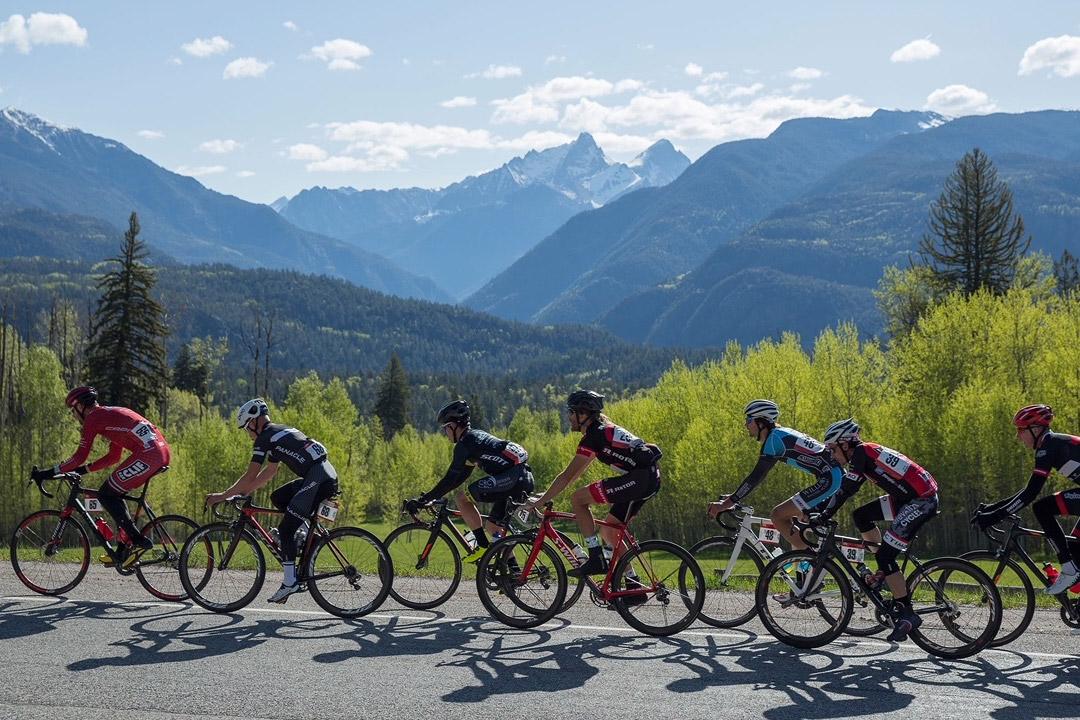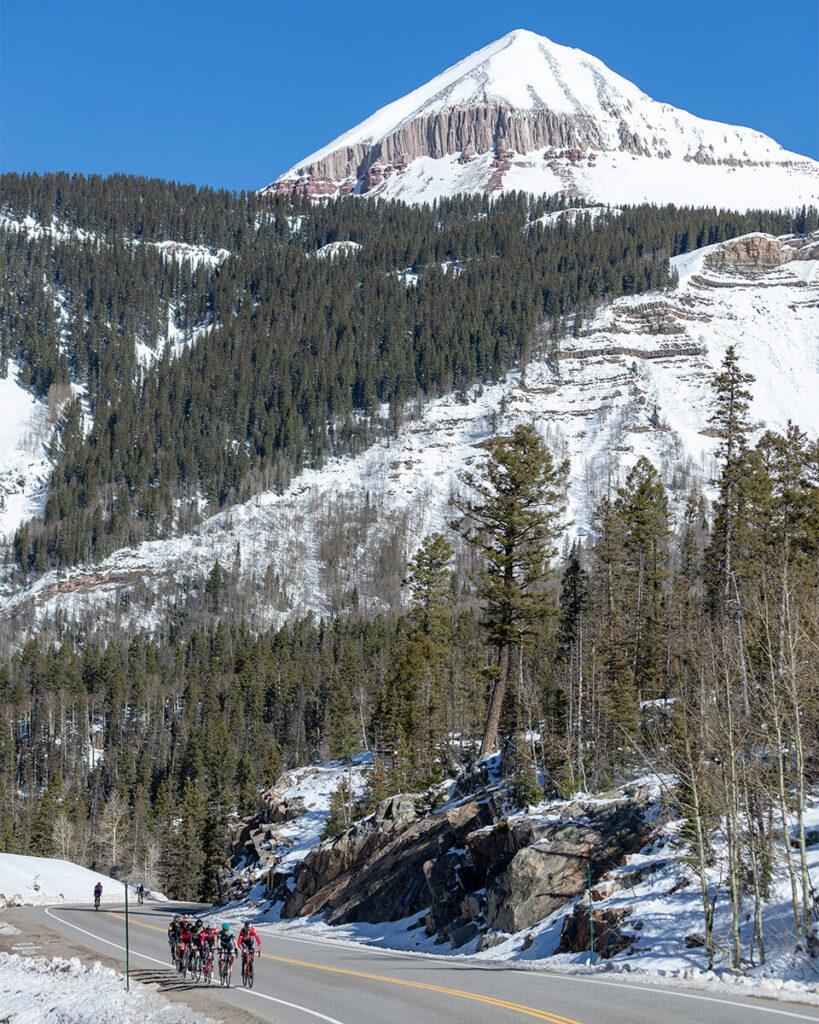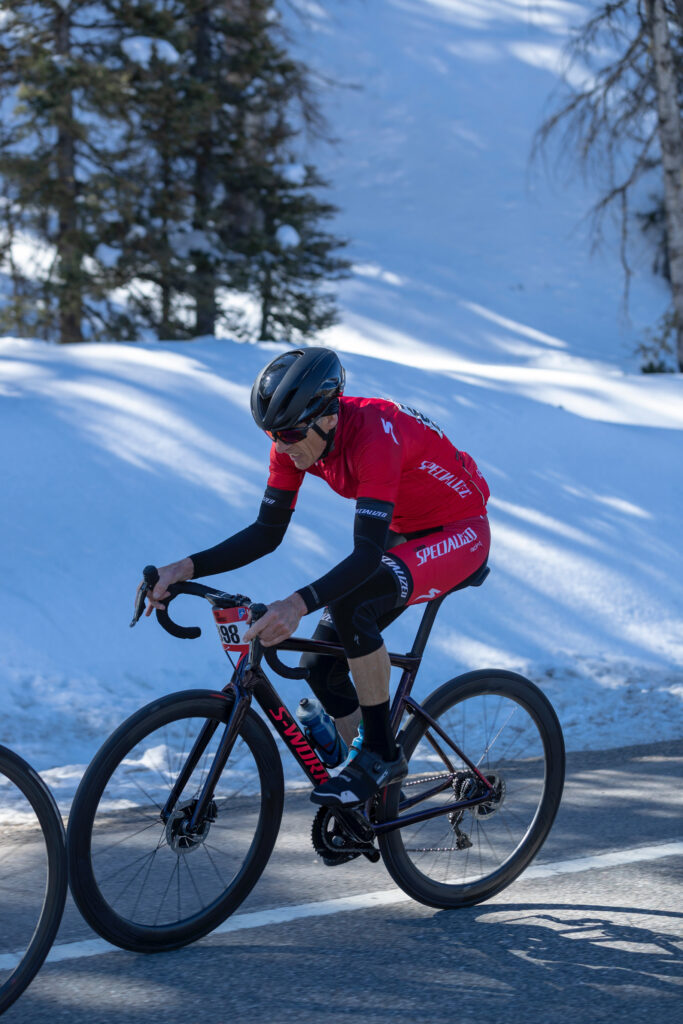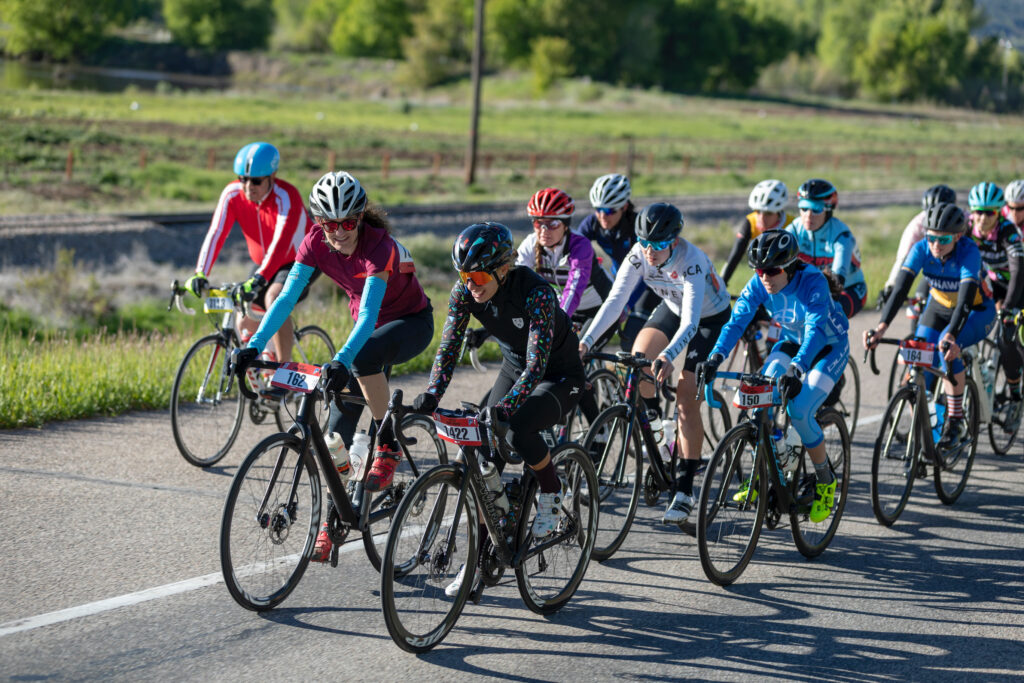
A half century ago, two Durango brothers challenged each other to a race. Tom Mayer, an avid cyclist, bet his older brother Jim that his 10-speed bicycle was faster than a steam-powered train. Jim was an engineer for the Durango & Silverton Narrow Gauge Railroad at the time and thought the train was up to the challenge.
Tom and Jim lined up their respective metal steeds in Durango and took off. As the bike and the train pulled out of Durango, Jim blasted the train whistle. When the train finally arrived in Silverton, 47-miles away, Tom was waiting by the tracks with his bike by his side.
That race in 1971 inspired a Durango bike shop owner to organize the first Iron Horse Bicycle Classic the following year. Since then, the race has been held every Memorial Day weekend — with the occasional cancellation because of a late-spring blizzard — with riders coming from far and wide to participate.
Colorado Matters senior host Ryan Warner spoke with Gaige Sippy, one of the directors of the race about its history, a legendary competitor known as “Deadly Nedly” and whether the Mayer brothers will be in attendance this year (they will reprise their roles on bike and train). Warner also wondered whether the train can ever win. Not a chance, said Sippy.
This interview has been edited for clarity and length.
Ryan Warner: It started with a challenge between two brothers in Durango, one on a bike, the other on a train. That was half a century ago. And the Iron Horse Bicycle Classic this year will include more than 3,000 cyclists peddling over mountain passes as they race against the Durango and Silverton Narrow Gauge Railroad. Race director Gaige Sippy is on the line ahead of the Memorial Day weekend event. Hi Gaige.
Gaige Sippy: Good morning.
Warner: How did these brothers dream up a contest between a steam-belching train and a flimsy 10-speed?
Sippy: Especially in the early 1970s. Both of them were adventurous and, as noted, one [Jim] worked for the train. The other one was a bit of an eccentric cyclist. That brother, Tom, kept seeing the train go by — he had been riding up into the high country on the highway and thought he could probably beat that darn train to Silverton.
And they made the bet. As the train went by, Tom jumped on his bike and when the train arrived in Silverton, Tom was already standing there to greet the train. So, he accomplished it in the first round.
Warner: So Tom on the bike, beat Jim on the train?
Sippy: Correct.

Warner: It becomes an official race next year, right?
Sippy: It does. How it transpired was the brothers shared their challenge with a local businessman who also owned a bicycle shop. His name was Ed Zink. Back then Durango wasn't the thriving metropolis it is now, so it seemed like a good idea for some sort of special event. They got started back in 1972 as a way to kick off the first train to Silverton Memorial Day weekend. And the rest, they say, is history — 50 years later.
Warner: Did the brothers keep competing?
Sippy: Yes, absolutely. Tom was involved in it for many of the early years, and Jim was a member of the train crew for many years. They both have since retired, but they are revisiting us for the 50th anniversary, and they are both going to be in the same roles once again.
Warner: Oh, that's so fun! The race sounds tough: 47 miles over two steep corkscrew passes on highway 550, and yet, each year more and more riders want to do it. Is there a mystique here?
Sippy: Absolutely. It has become a tradition for road bikers and cyclists in our region and across the country. This year, we will have riders from 43 states and five countries. That's fairly customary for us, and [competitors] range from professional-level athletes to the first-timer, weekend-warrior people setting a goal for themselves to get in shape.
I think the strength of the event is the fact that amongst all of these participants, we have a very diverse level of fitness, enthusiasm and ability, but they all make their way over the hill.
Warner: Is it tough on those first-timers though?
Sippy: Absolutely. The professional racers can do this route in about 2 hours and 15 minutes. For some of the first-timers, it takes them right in the area of 6 hours. That gives you an idea of the span, but we only have about 20 every year that don't make it the whole way. So, our finish rate is extremely high.
Warner: Does the train ever win? You have 49 years of evidence here.
Sippy: It has won when we have canceled because of snowstorms, but it never won because it can beat those fastest riders. It takes the train anywhere from 3 hours and 30 minutes to 3 hours and 45 minutes to get to Silverton from Durango. Like I said, the top-end cyclist can do it in 2 hours and 15 minutes to 2 hours and 20 minutes.
Warner: So, the train beats some of the slower cyclists. Do they try to supercharge the train at all to get it to beat its own time?
Sippy: While they would never admit to it, I have heard rumblings that there may be a little more coal that gets thrown in the fire that day to get [the train] up and over the hill. But it's a heavy piece of machinery, and I don't think it can modulate its speed a whole lot.
Warner: You have raced this race, correct?
Sippy: Correct.
Warner: Are there moments when you are right up alongside the train? That must be such a thrilling feeling.
Sippy: Absolutely. For the first 10 miles, [the train] travels almost next to the road that you're on, so you get a feel right away if you are keeping up, or going behind. It's a flat section through our valley leaving town, and then we get into the hills and the train starts taking a different — albeit a bit easier route — to Silverton. It stays along the River Valley, whereas the highway goes over the mountain passes. The train never reaches the elevations that the bike riders do, so one could argue that the bike riders have an even harder route.

Warner: The train has it easy. A legendary Durango rider named Ned Overend has competed in every Iron Horse since 1982. Is it true that racers get a thrill when they're passed by a man they call “Deadly Nedly,” who is 66 years old this year?
Sippy: Ned is, by far, our greatest ambassador for the event as a cyclist. He did start competing in '82; He has won numerous times. He has competed on the world stage in both mountain biking and road racing, and he won the first ever Mountain Bike World Championships in 1990. So, he is a hero amongst all cyclists.
But at our event, there are people that are just thrilled when they get passed by Ned Overend because they feel like they are really part of the event. It's the essence of the event. And yes: Ned is 66 years old and, I assure you, he will be in the mix in the pro men's race against 20-year-old riders. He is by far one of our greatest riders at this event.
Warner: Until 1979, female racers weren't allowed to go past the Purgatory Ski Resort, which is 27 miles north of Durango, because it was thought the passes were too difficult for them. Do a lot of women today ride the Iron Horse?
Sippy: Absolutely. Thirty percent of our rider population is female. Interestingly enough, although Ned would not like me to say this, the winningest rider in the Iron Horse is Mara Abbot from Boulder, Colorado. She has won the event six times; Ned has won it five times.
But yes, we have strong female participation. It almost seems laughable at this point that it took until 1979 for the females to go all the way. But, by far, they are right up there with some of our best times.
Warner: The race tops out on two 10,000-foot-plus passes: Molas and Cold Bank. That means that even at the end of May, the weather can be not just bad, but downright terrible. Do you worry about snow?
Sippy: Absolutely. We have had many snow events through the years. We have a lot of precautions in place on how we can contain people up on the passes if the weather turns nasty. It can be a 10-minute snowstorm, or it can be a show stopper. For instance, in 2008, it snowed 18 inches on Cold Bank Pass. That canceled the event altogether. But we have also had years where it snowed during the event, melted off and people keep going. Weather is our biggest challenge each and every year.
Warner: Gaige, before I get your thoughts on the role that this race has played in elevating the town, why do you call Ned “The Pope of Silverton”?
Sippy: I say that because there will be a lot of people that finish the race, or ride in Silverton on May 28th — thousands of people. There will be lots of other professional cyclists and notable individuals, but no one is as popular as Ned Overend in Silverton on Iron Horse day.
Most people get off the bike and they say, "How did Ned do," because he is by far, as I've said before, the ambassador or the Pope of Silverton.

Warner: You have witnessed Durango's cycling reputation abroad. What's this story in Italy?
Sippy: Last summer, I had the opportunity to go to Italy for the Mountain Bike World Championships. Now, keep in mind, Durango hosted the first World Mountain Bike Championships in 1990. As I stood there watching participants from all over the world and listening to the announcer talking about riders from various places across the globe, Durango kept coming up.
Durango had nine athletes at the World Championships this past year. Nine from a town of 18,000 [people]. I went back that evening and I started scrolling through the results of all of the events that had taken place that day. Durango had the most riders competing than any other town in any other country in the world.
Warner: Remarkable.
Sippy: We have a unique thing going on here in Durango, in the United States, with the type of cyclists we have. That shows on a global stage when you go to high-caliber events.
Warner: There are all kinds of events going on with this event on Memorial Day weekend, correct?
Sippy: We will do our traditional Durango to Silverton event. But this year, we have added a Ouray to Silverton ride, which goes over Red Mountain Pass. We will do other mountain bike-related cycling activities, and gravel-related activities over the weekend. We also have an exhibit starting at the Center for Southwest Studies: 50 years of the Iron Horse and our cycling culture here in Durango.
You only turn 50 once, as they say. We are planning to celebrate through the weekend to thank our community, and everyone that has been involved with this [race] through the years. But without the support of the community, this still wouldn't be happening 50 years later.
Warner: Gaige, thank you so much for your time. Are you riding this year?
Sippy: I am not riding.
Warner: Well, I was going to say good luck, but I withdraw. Thanks Gaige, I appreciate it.
Sippy: I think I still need some luck.
Warner: I'll send it your way. Gaige Sippy, Director of the Iron Horse Bicycle Classic, the historic bicycle versus train race, takes place Memorial Day weekend in Durango.








